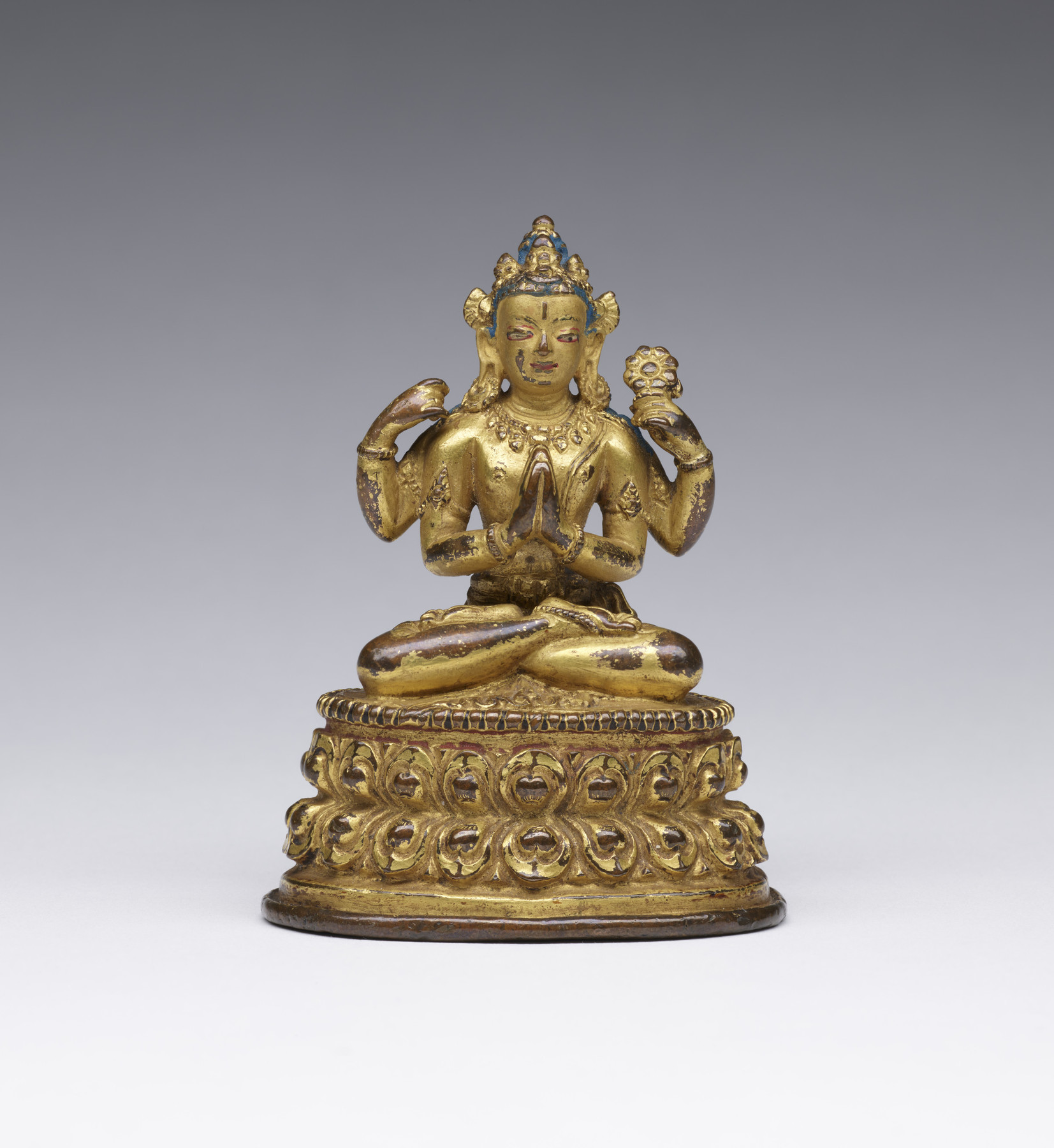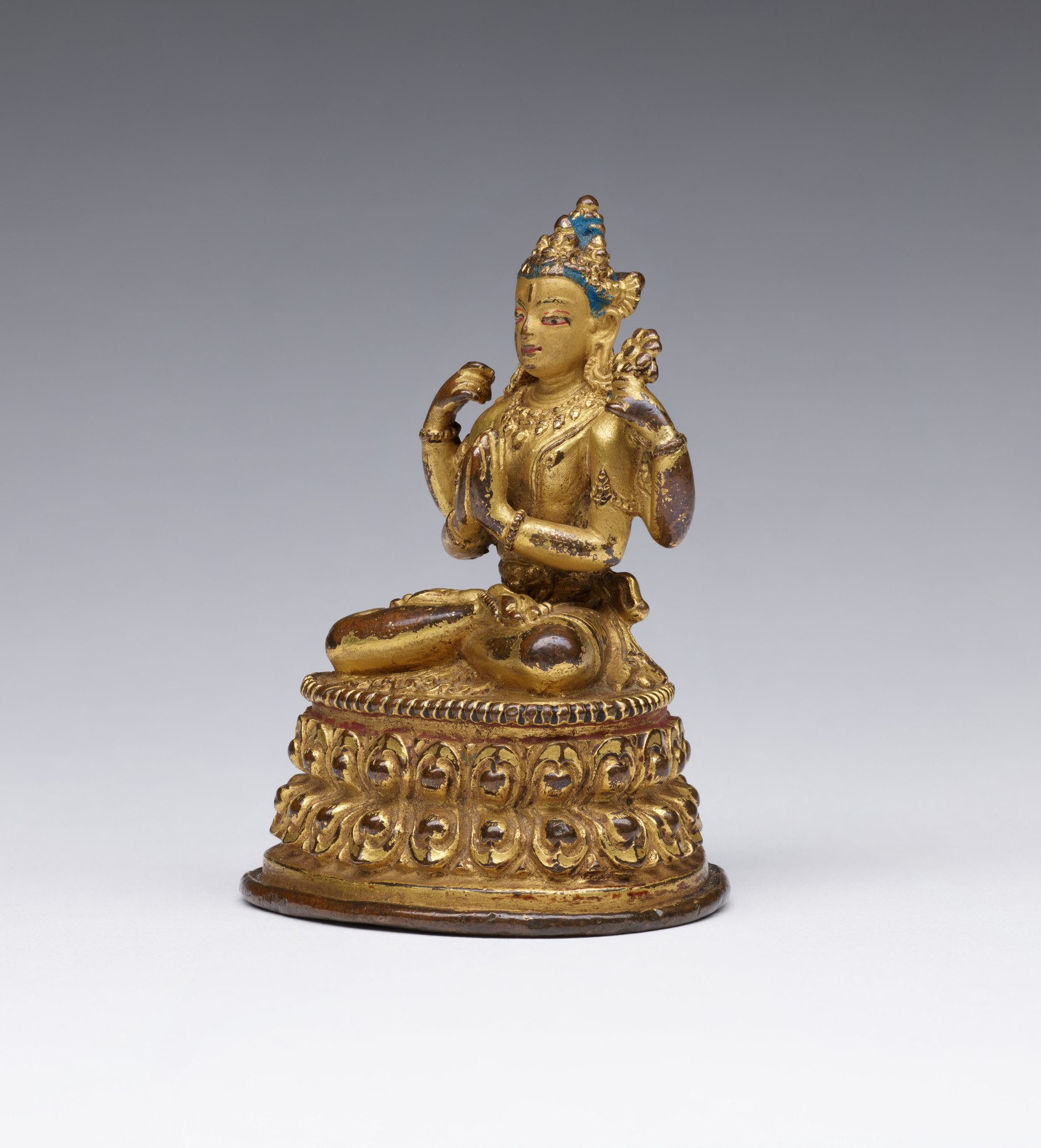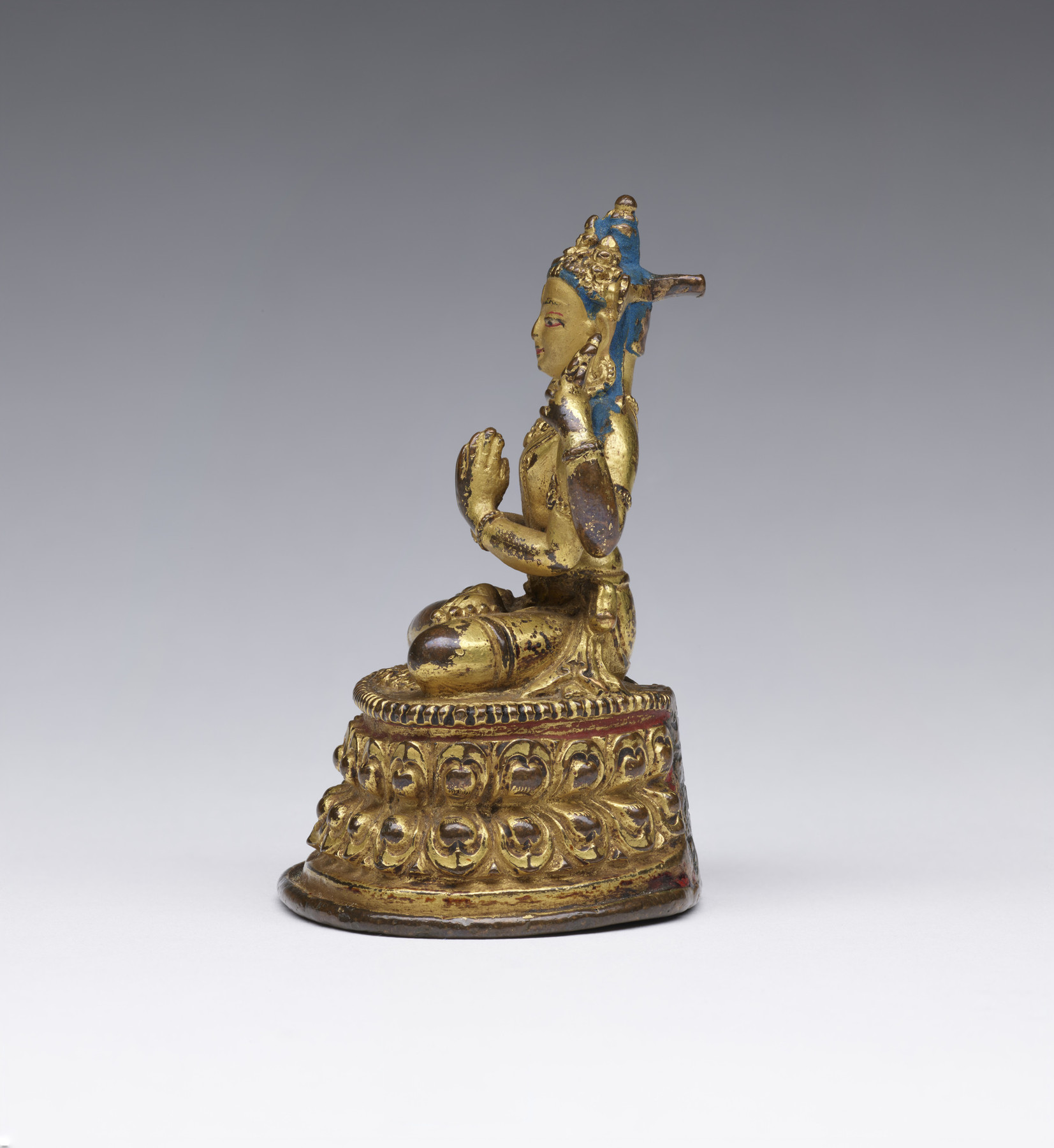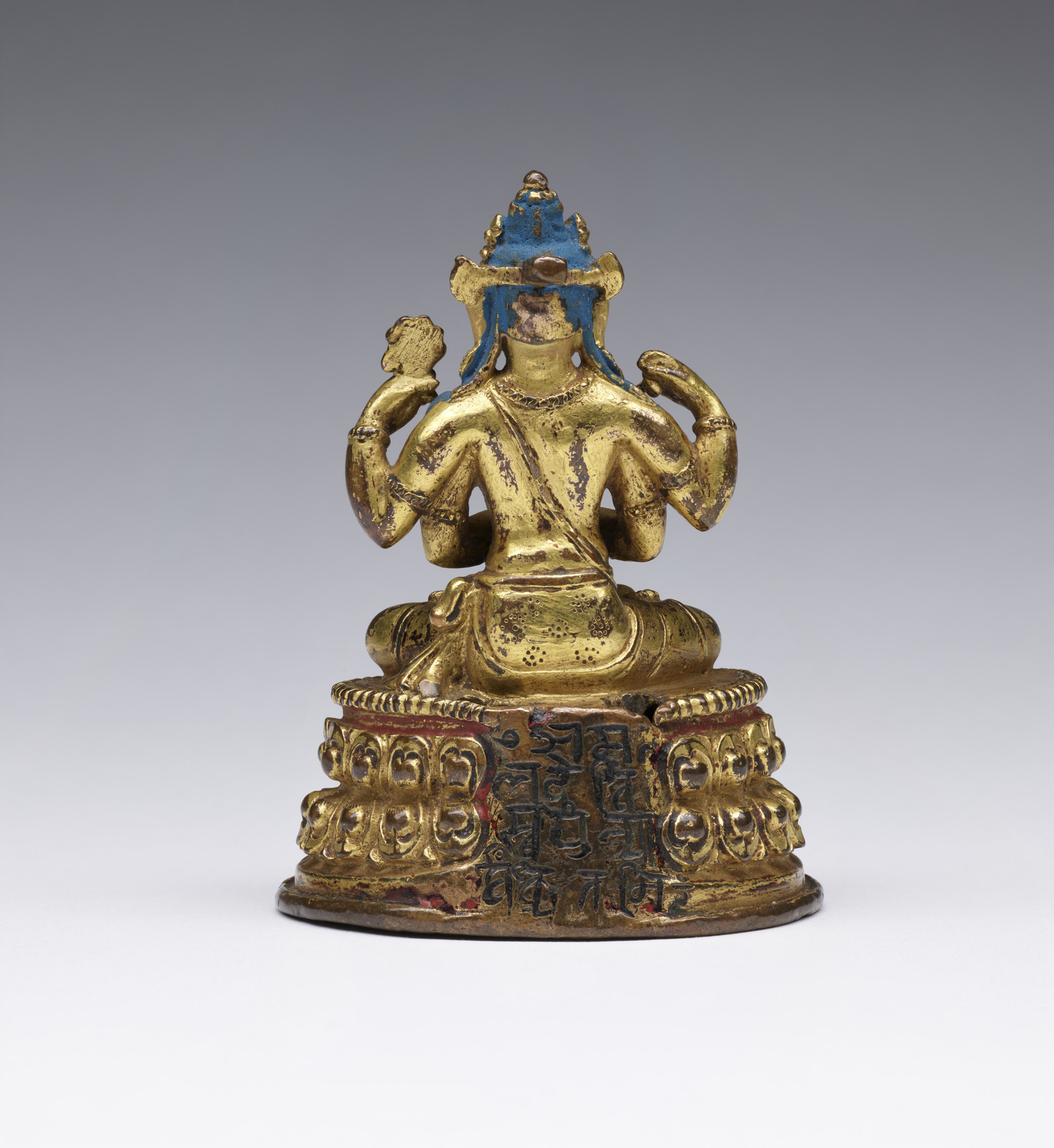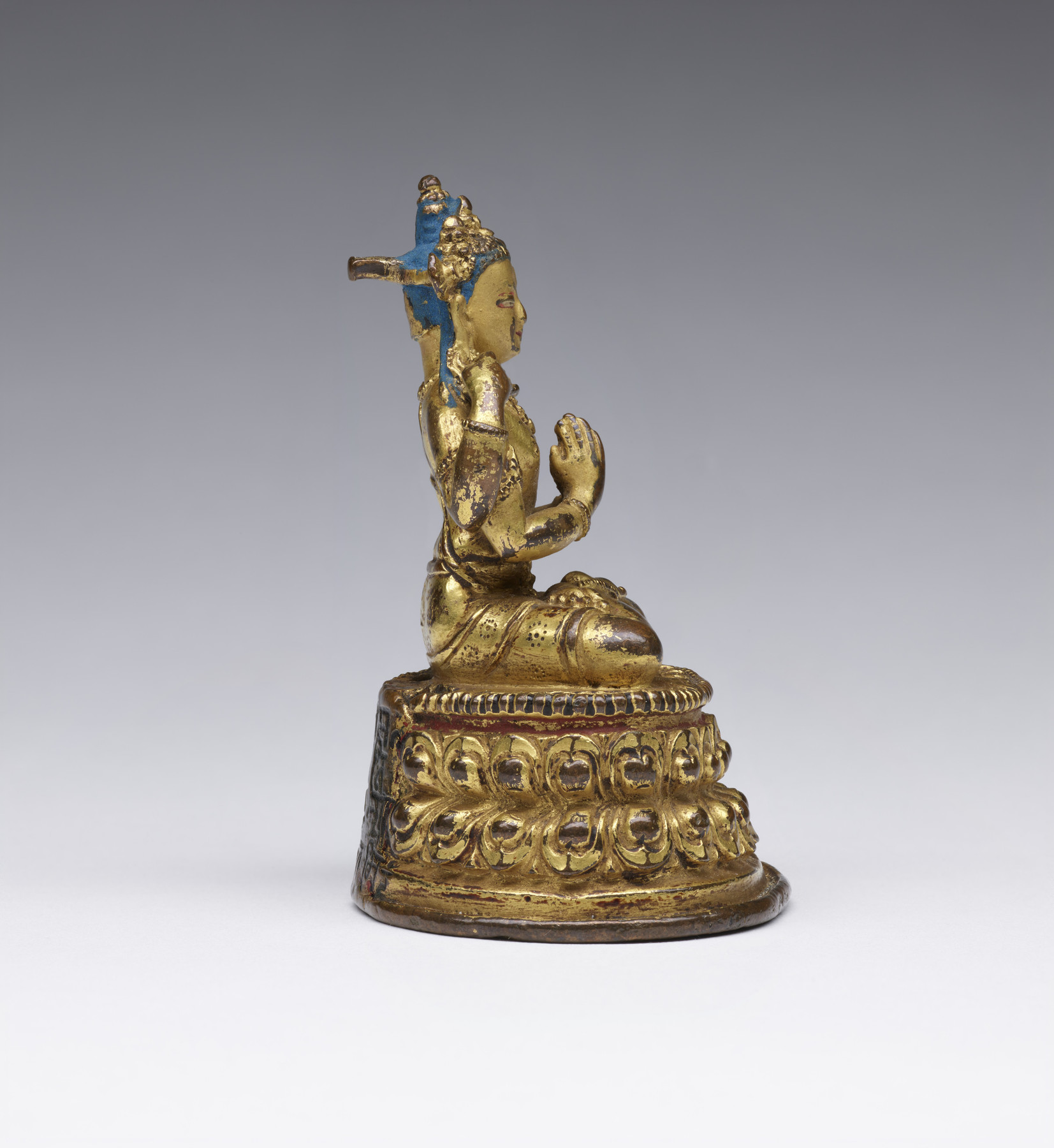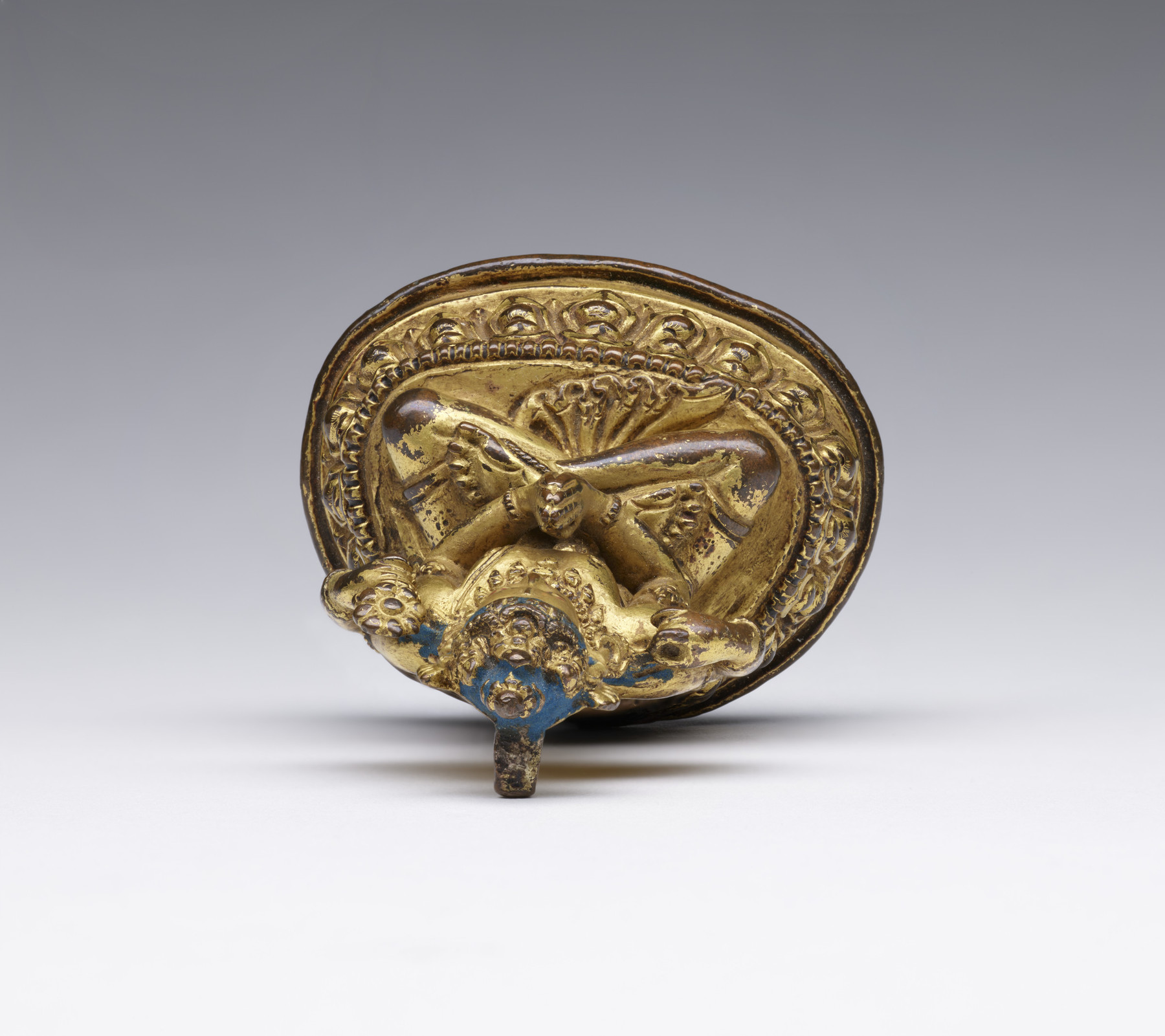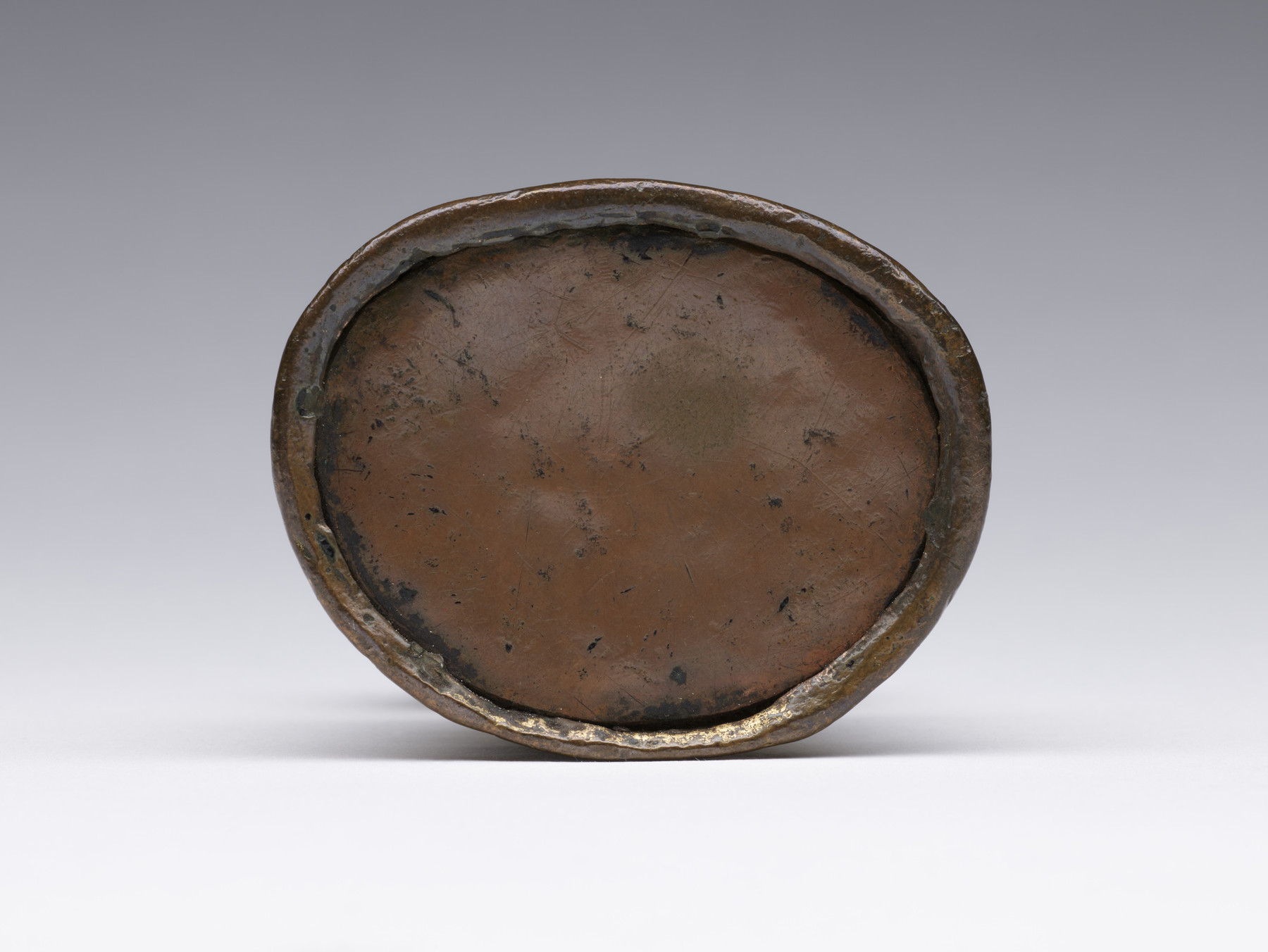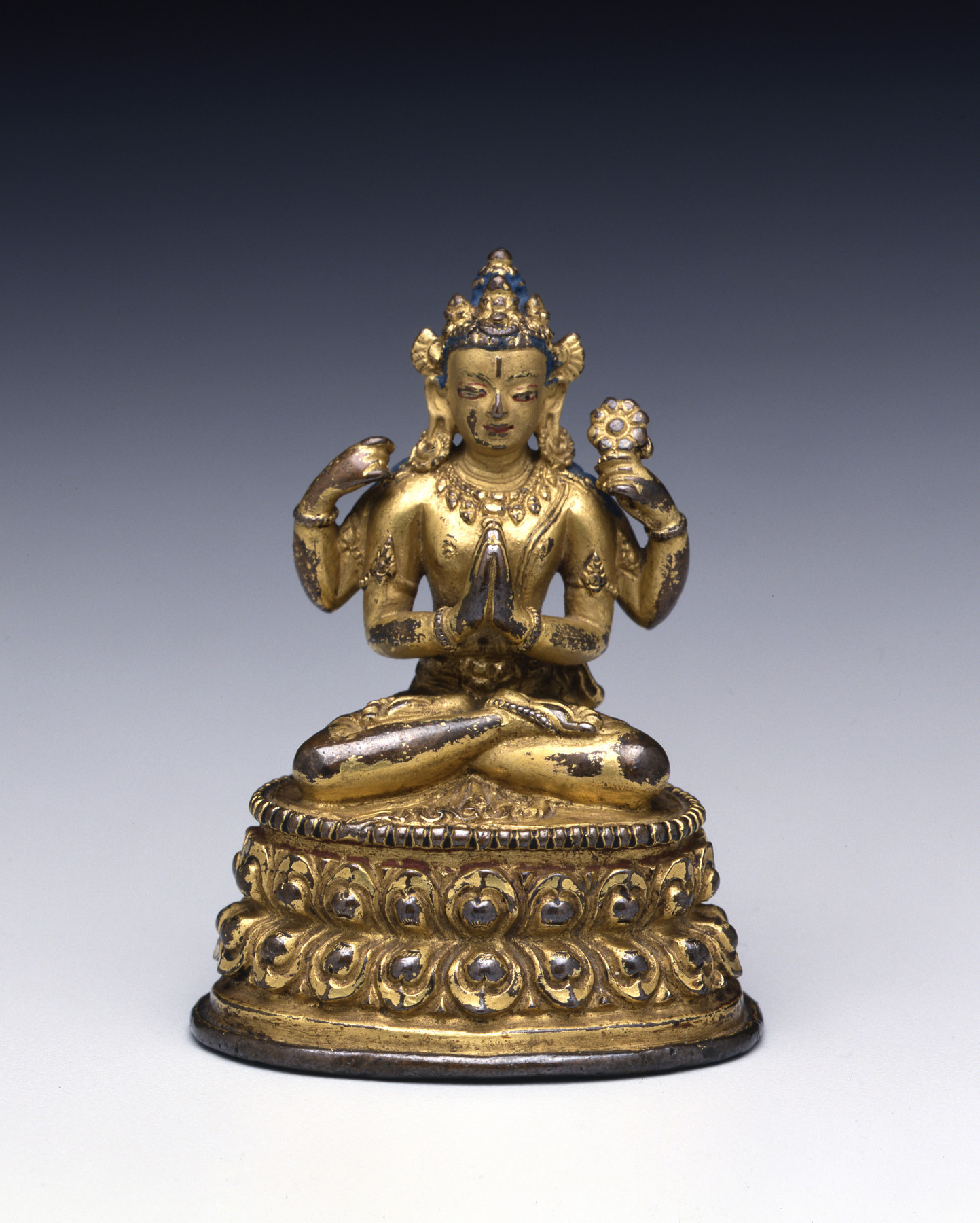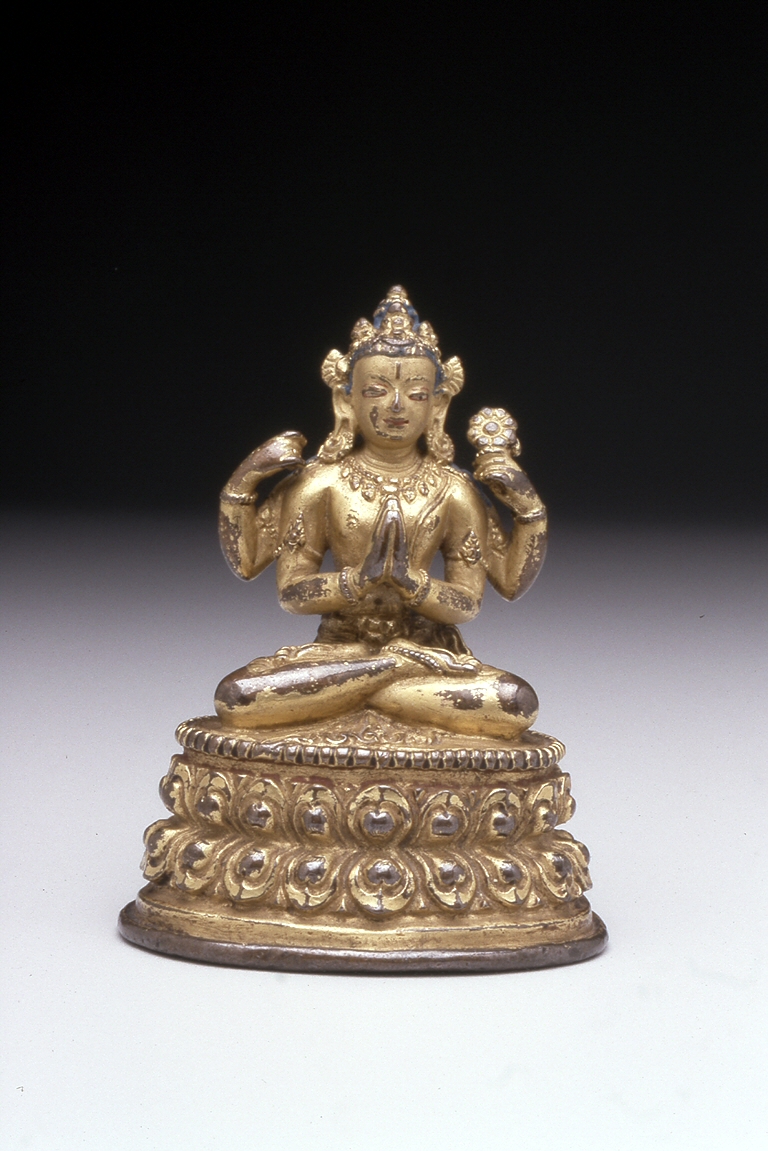Bodhisattva Avalokiteshvara
(India, Nepal, and Tibet)
The lavishly ornamented bodhisattva with four arms represents the form of Avalokiteshvara that is the personification of the deity's mantra of six syllables ("shadakshari"): om-ma-ni-pad-me-hum. Seated in the classic meditation posture on a high lotus base, his principle hands form the salutation gesture. The second left hand holds the ubiquitous lotus, but the other emblem, the rosary, is missing from the second right hand.
Provenance
Provenance (from the French provenir, 'to come from/forth') is the chronology of the ownership, custody, or location of a historical object. Learn more about provenance at the Walters.
John and Berthe Ford, Baltimore; given to Walters Art Museum, 2002.
Geographies
Tibet
(Place of Origin)
Nepal (Place of Origin)
Measurements
H: 3 1/4 × W: 2 3/8 × D: 2 in. (8.26 × 6.03 × 5.08 cm)
Credit Line
Gift of John and Berthe Ford, 2002
Accession Number
In libraries, galleries, museums, and archives, an accession number is a unique identifier assigned to each object in the collection.
In libraries, galleries, museums, and archives, an accession number is a unique identifier assigned to each object in the collection.
54.3010

